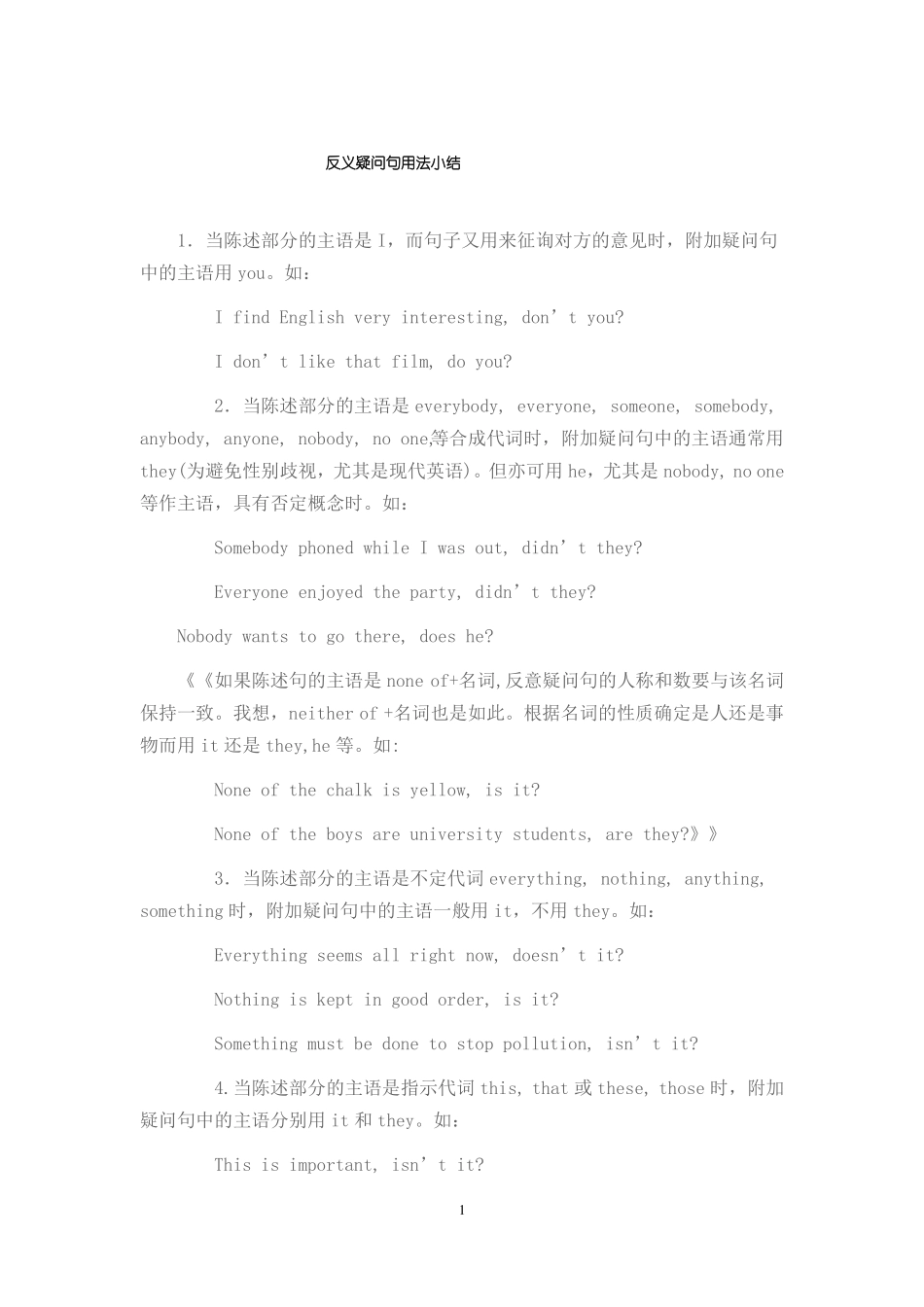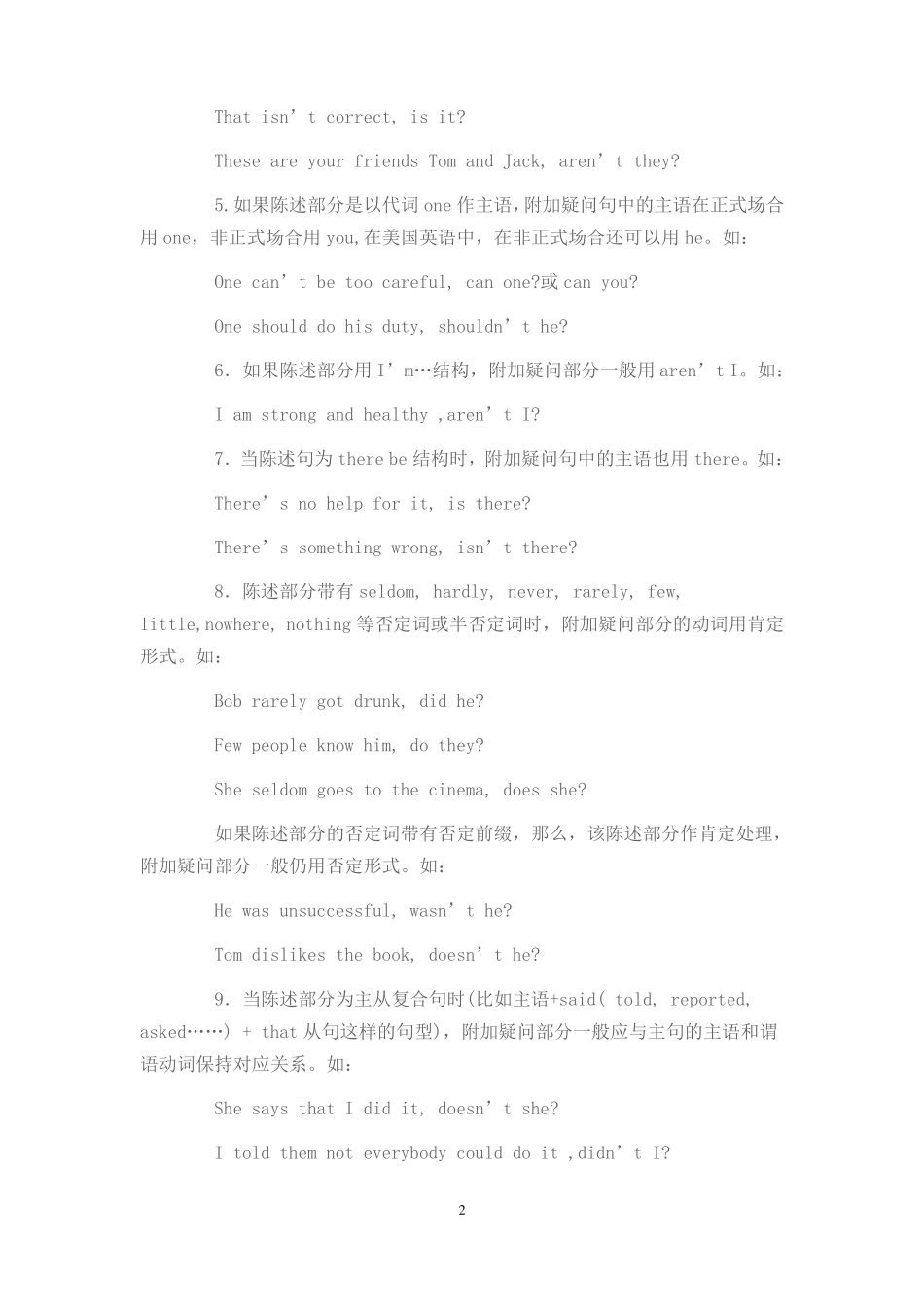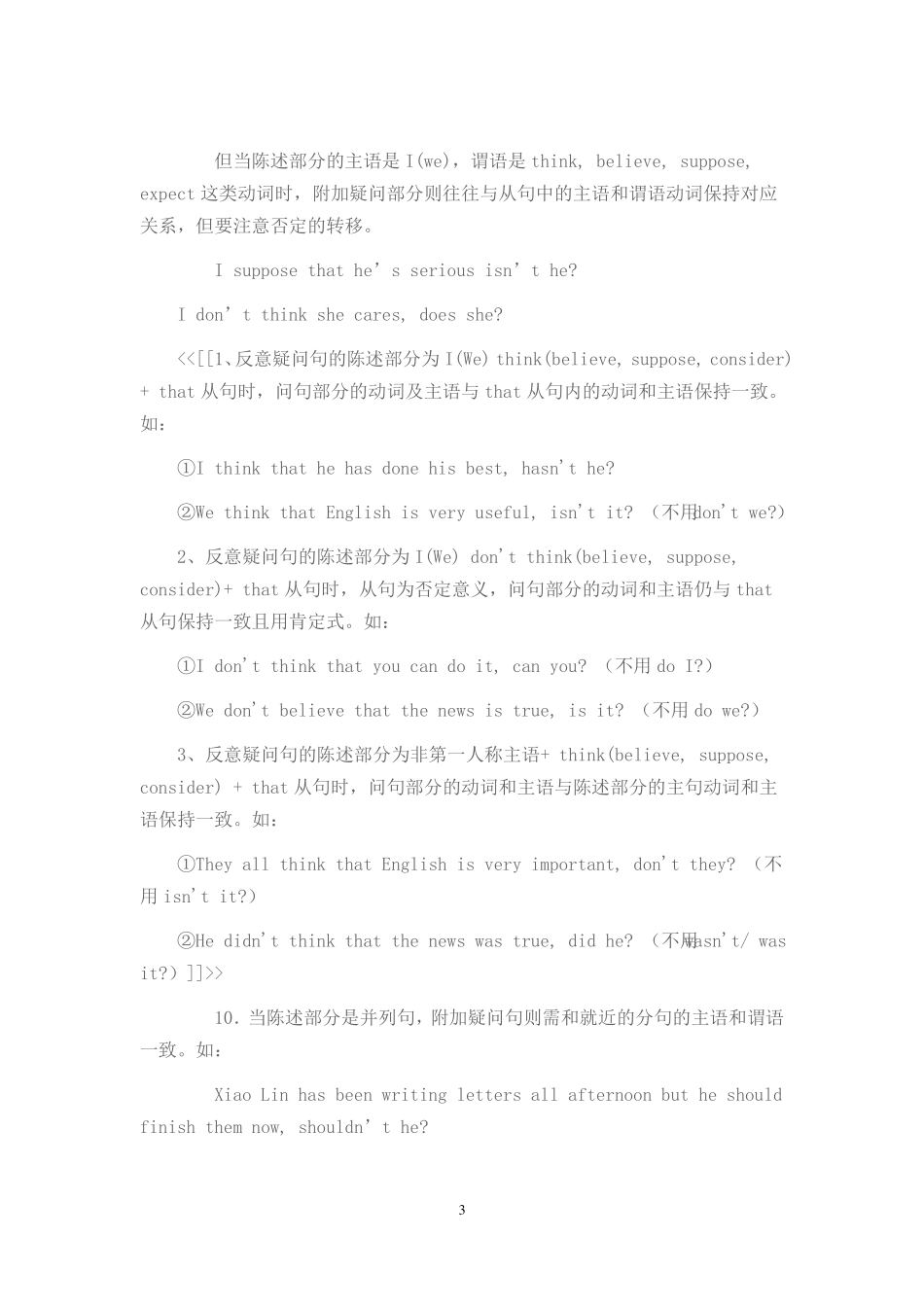反义疑问句用法小结1.当陈述部分的主语是 I,而句子又用来征询对方的意见时,附加疑问句中的主语用 you。如:I find English very interesting, don’t you?I don’t like that film, do you?2.当陈述部分的主语是 everybody, everyone, someone, somebody,anybody, anyone, nobody, no one,等合成代词时,附加疑问句中的主语通常用they(为避免性别歧视,尤其是现代英语)。但亦可用 he,尤其是 nobody, no one等作主语,具有否定概念时。如:Somebody phoned while I was out, didn’t they?Everyone enjoyed the party, didn’t they?Nobody wants to go there, does he?《《如果陈述句的主语是 none of+名词,反意疑问句的人称和数要与该名词保持一致。我想,neither of +名词也是如此。根据名词的性质确定是人还是事物而用 it 还是 they,he 等。如:None of the chalk is yellow, is it?None of the boys are university students, are they?》》3.当陈述部分的主语是不定代词 everything, nothing, anything,something 时,附加疑问句中的主语一般用 it,不用 they。如:Everything seems all right now, doesn’t it?Nothing is kept in good order, is it?Something must be done to stop pollution, isn’t it?4.当陈述部分的主语是指示代词 this, that 或 these, those 时,附加疑问句中的主语分别用 it 和 they。如:This is important, isn’t it?1That isn’t correct, is it?These are your friends Tom and Jack, aren’t they?5.如果陈述部分是以代词 one 作主语,附加疑问句中的主语在正式场合用 one,非正式场合用 you,在美国英语中,在非正式场合还可以用 he。如:One can’t be too careful, can one?或 can you?One should do his duty, shouldn’t he?6.如果陈述部分用 I’m…结构,附加疑问部分一般用 aren’t I。如:I am strong and healthy ,aren’t I?7.当陈述句为 there be 结构时,附加疑问句中的主语也用 there。如:There’s no help for it, is there?There’s something wrong, isn’t there?8.陈述部分带有 seldom, hardly, never, rarely, few,little,nowhere, nothing 等否定词或半否定词时,附加疑问部分的动词用肯定形式。如...


